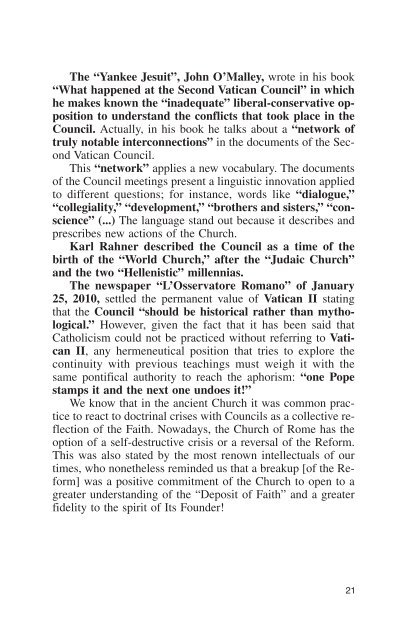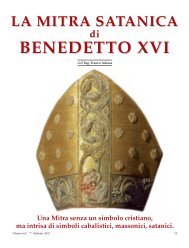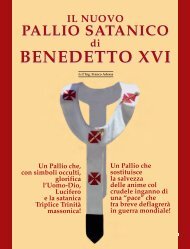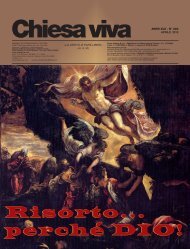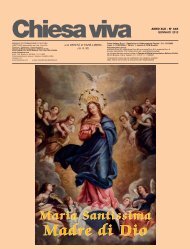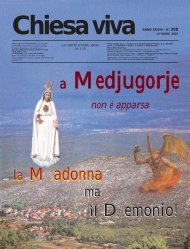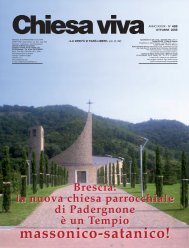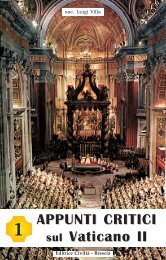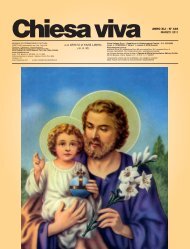Vatican II ABOUT FACE! - Chiesa viva
Vatican II ABOUT FACE! - Chiesa viva
Vatican II ABOUT FACE! - Chiesa viva
Create successful ePaper yourself
Turn your PDF publications into a flip-book with our unique Google optimized e-Paper software.
The “Yankee Jesuit”, John O’Malley, wrote in his book<br />
“What happened at the Second <strong>Vatican</strong> Council” in which<br />
he makes known the “inadequate” liberal-conservative opposition<br />
to understand the conflicts that took place in the<br />
Council. Actually, in his book he talks about a “network of<br />
truly notable interconnections” in the documents of the Second<br />
<strong>Vatican</strong> Council.<br />
This “network” applies a new vocabulary. The documents<br />
of the Council meetings present a linguistic innovation applied<br />
to different questions; for instance, words like “dialogue,”<br />
“collegiality,” “development,” “brothers and sisters,” “conscience”<br />
(...) The language stand out because it describes and<br />
prescribes new actions of the Church.<br />
Karl Rahner described the Council as a time of the<br />
birth of the “World Church,” after the “Judaic Church”<br />
and the two “Hellenistic” millennias.<br />
The newspaper “L’Osservatore Romano” of January<br />
25, 2010, settled the permanent value of <strong>Vatican</strong> <strong>II</strong> stating<br />
that the Council “should be historical rather than mythological.”<br />
However, given the fact that it has been said that<br />
Catholicism could not be practiced without referring to <strong>Vatican</strong><br />
<strong>II</strong>, any hermeneutical position that tries to explore the<br />
continuity with previous teachings must weigh it with the<br />
same pontifical authority to reach the aphorism: “one Pope<br />
stamps it and the next one undoes it!”<br />
We know that in the ancient Church it was common practice<br />
to react to doctrinal crises with Councils as a collective reflection<br />
of the Faith. Nowadays, the Church of Rome has the<br />
option of a self-destructive crisis or a reversal of the Reform.<br />
This was also stated by the most renown intellectuals of our<br />
times, who nonetheless reminded us that a breakup [of the Reform]<br />
was a positive commitment of the Church to open to a<br />
greater understanding of the “Deposit of Faith” and a greater<br />
fidelity to the spirit of Its Founder!<br />
21


